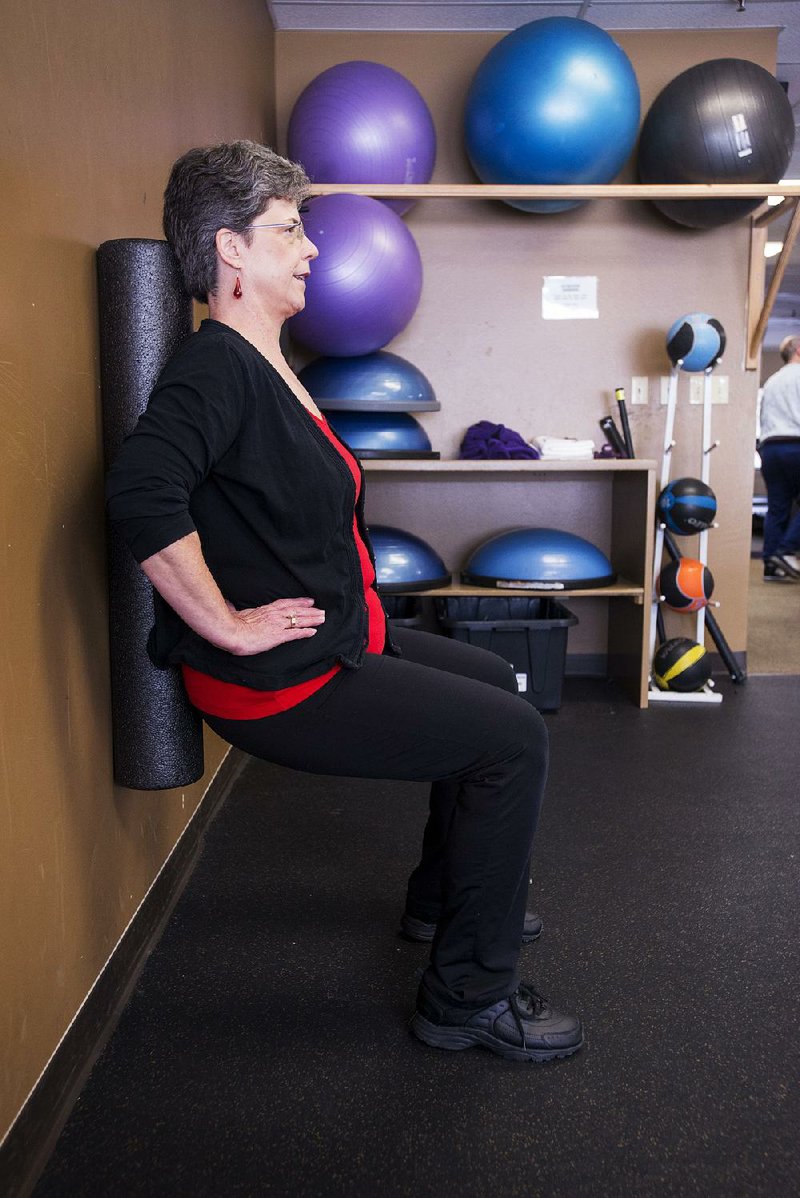LITTLE ROCK — It’s unfortunate that more trainers don’t use isometric exercise in today’s fitness programs. It’s a unique form of training that is particularly suited for those interested in reducing joint discomfort while building strength work into their routine.
Like any form of training, there are advantages and disadvantages, which I’ll address in this week’s column. In addition, I’ll introduce a hybrid version of one of my old favorite isometric exercises.
Isometric exercise has been around since exercise for fitness was invented. The idea of maintaining a constant muscle contraction for a period of time is not particularly innovative in today’s fitness world. The application of isometric exercise has, however, evolved a great deal over the years.
Very basic isometric exercises, such as an isometric biceps curl, have been performed for decades - possibly for centuries. These days, it’s not unusual to see someone do an isometric contraction with one muscle group and a dynamic contraction with another while sitting on a Swiss ball. This is quite a departure from the roots of isometric exercise, which some people date to ancient martial arts or yoga. Isometrics first became widely known in this country during the physical culture craze of the late 19th century, when some early muscle men advocated static holds.
The real advantage of using isometric exercises in your fitness program is joint safety.Rather than applying resistance across a full range of motion, isometric exercises simply require that you hold one joint position for a specified time. This creates less wear and tear on the joint structure, which should be noticeable in the long run.
Core exercises are great candidates for isometric training protocols. For example, the plank exercise has grown in popularity over the past decade because people have found that isometric training with the core muscles tends to not only be effective, but also offers a different type of challenge than traditional repetition training.
With isometrics, you’re attempting to reach a certain number of seconds or minutes in a given contraction, which is a fun way to mentally push yourself to the next level.
This week’s exercise is a version of the standard wall sit exercise you likely performed in eighth grade gym class, but this one has a twist.
Grab a foam roller and position it vertically against the wall 3 or 4 feet off the floor.
Now position yourself with the center of your spine aligning with the foam roller and pressing it against the wall while you are in a squatting position.
Your knees should be at 90 degrees, and the foam roller should be in the middle of your back.
Place your hands on your hips.
Slowly walk your feet sideways to the right, continue to face forward and allow the foam roller to roll as you move. Stop when the roller is even with your left shoulder.
Slowly walk your feet to the left until the roller is even with your right shoulder.
Continue this side walking while in the squatting position for 30 seconds.
Although there is movement from side to side during this exercise, the quadriceps are performing an isometric contraction. You’ll notice a nice burn in the tops of your thighs when you begin to fatigue, but keep pushing yourself to reach 30 seconds.
Once you accomplish that, set a new goal for 60 seconds. Fun!
Matt Parrott has a doctorate in education (sport studies), a master’s in kinesiology and is certified by the American College of Sports Medicine.
ActiveStyle, Pages 28 on 01/14/2013
